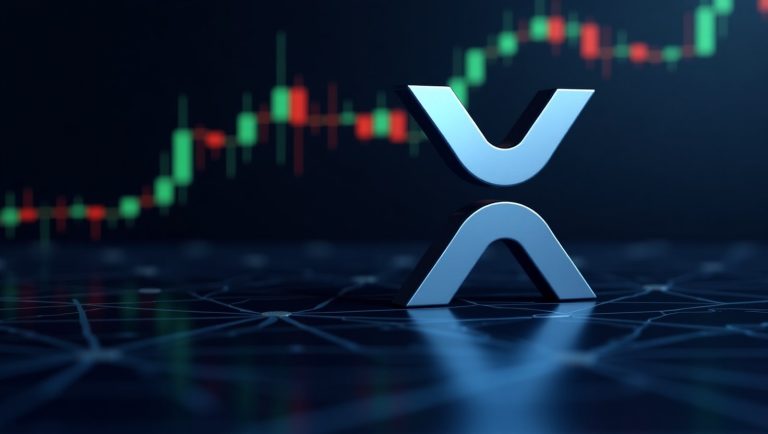With the cryptocurrency market treacherously undecided in July 2025, Polkadot (DOT) has become one of the leading performers of major altcoins, perhaps due to its special and peculiar interoperability system and popularizing ecosystem. Amidst the Bitcoin dominance and other altcoins being under a bearish pressure, Polkadot’s focus and faith in connecting blockchains and supporting innovative play have seen its native coin, DOT, reach a trading price of around 8.45 dollars on July 3, 2025. At a year-to-date climb of 32 percent, Polkadot is taking the highlight of investors as the entire crypto market cap falls by 2.3 percent to a level of 3.4 trillion USD.
Polkadot can be described as one of the pillars of the Web3 vision since it can allow treating disparate blockchains as a single integrated unit with no need to employ blockchain bridging technologies. This has been a factor used by the network to grow the developer and project base, especially in decentralized finance (DeFi) and cross-chain applications as of 2025, and DOT is a major contender in the altcoin arena.
Interoperability Fuels Ecosystem Expansion
The main value-add of Polkadot lies in the possibility to inter-relate several blockchains via its structure of relay chain and parachains. This interoperability has led to its ecosystem experiencing considerable expansion, having 70 parachains running projects in DeFi, gaming, and digital identity as of July 2025. It is possible to mention such parachains as Acala and Moonbeam that have been adopted to some degree, and 40% more TVL is reported in the DeFi hub of Acala as compared to the beginning of the year.
Additional recent improvements to the Polkadot protocol including optimization of the consensus mechanism, have improved the speed and lowered the cost of transactions, making Polkadot more competitive with other layer-1 competitors such as Ethereum and Cardano. The developments have drawn developers interested in the scalability of cross-chain applications, a move that further consolidates Polkadot as a center of blockchain innovation.
Bullish Technical Sign Master Signals
Technically, the price action of Polkadot is becoming encouraging. DOT is trading above a major resistance surface at 8.20, making a bullish ascending triangle formation in its daily chart. According to the analysts, the near-term target is estimated to be at a share price of 9.50, with a good support at the 7.80 share price. The Relative Strength Index (RSI) is on an uptrend, but it is yet to attain overbought levels, implying that there is more space to be enjoyed. People have also been trading more, which is a sign that there is good market interest in spite of the overall challenges in the market.
Polkadot resistance is an interesting observation considering the recent crash in market prices, as 80 out of the 100 leading coins by market capitalization have recorded negative gains in the last 24 hours. This stability further highlights the increased attractiveness that DOT has since it is a haven for those investors who intend to have exposure to altcoins with good fundamentals.
Valid Institutional and Regulatory Developments
In 2025, Polkadot’s ecosystem has seen a rise in interest among Institutional investors. Hopes have been high for the introduction of altcoin exchange-traded funds (ETFs), with Polkadot being one of the possible candidates for ETF approval later in 2025. Although no definite decisions have been reached, the wider popularity of altcoin ETFs through the example of Ethereum and Solana is good news regarding the future of Polkadot.
Momentum on regulation in the U.S. has been a factor, too. Policymakers have made more positive remarks about the possibilities of cryptocurrencies recently, and Polkadot, with its interoperable system, can be more aligned with the regulatory needs to have a transparent and efficient system of blockchain technology. This has increased the levels of confidence of investors, especially the institutional players who are seeking diversification of Bitcoin and Ethereum.
Technical Analysis Signals Bullish Potential
Although it performs well, Polkadot is competing with several altcoins in the industry. The competitors, such as Cosmos and Avalanche, have similar functionality of interconnectivity, which presents the risk of not being able to retain an edge in terms of technological and adoption superiority. As well, the recent surge of tokens unlocks within the crypto marketplace, such as $35 million on Arbitrum and $56 million on Aptos in July, may bring volatility in case the demand does not correspond to the new supply. Just recently, Polkadot will unlock 20 million DOT tokens on July 15, and traders are focusing on the effect it will have on the price.
Investor sentiment may also be affected by the macroeconomic factors, like the prospective U.S. labor market reports scheduled for July 3. Weaker-than-expected jobs report can allow risk appetite to disappoint, which in turn could hurt altcoins such as DOT. Still, the core strengths and expanding ecosystem cushion Polkadot against the volatile short-term market conditions.
Partnerships and Real World Applications
One of the main reasons that is making Polkadot grow is its applications in the real world. By 2025, the network will have extended into offering supply chain management and decentralized identity services in Europe and Asia, including partnerships. As an example, Polkadot has been used as a part of a partnership with a large European logistics organization where the parachains were used to keep track of cross-border deliveries, demonstrating its value in enterprise applications. This is an effort to showcase the capacity of Polkadot to offer solutions with real use other than trade speculations.
The Polkadot community has not been left behind, as the latest governance proposals have been passed on to fund new Polkadot parachain projects and to provide funding to developers. This is also a community-based project, and the similarity with Cardano is due to the governance model.
To the Future: The way of Polkadot to 10
Polkadot has an advantage in that the crypto can take advantage of its technical and community strengths in July 2025. Analysts believe DOT can soar up to 10 by Q4 2025 through the maintenance of a strong parachain growth, the prospective ETF achievements, and the further adoption rates of the DOT in other DeFi and Web3 solutions. Having said that, long-term forecasts indicate an increase to $12 by mid-2026, assuming pleasant market conditions.
Polkadot is a star in the altcoin market because of its exclusive interoperability, well-developed ecosystem, and support by institutions. Although the risk factors, such as unlocking of tokens and macroeconomic doubt, are still there, the durability and creativity of DOT will make it one of the leading cryptocurrencies to monitor in July 2025 and beyond.











 Bitcoin
Bitcoin  Ethereum
Ethereum  Tether
Tether  XRP
XRP  USDC
USDC  Lido Staked Ether
Lido Staked Ether  TRON
TRON  Cardano
Cardano  Avalanche
Avalanche  Toncoin
Toncoin  Wrapped SOL
Wrapped SOL